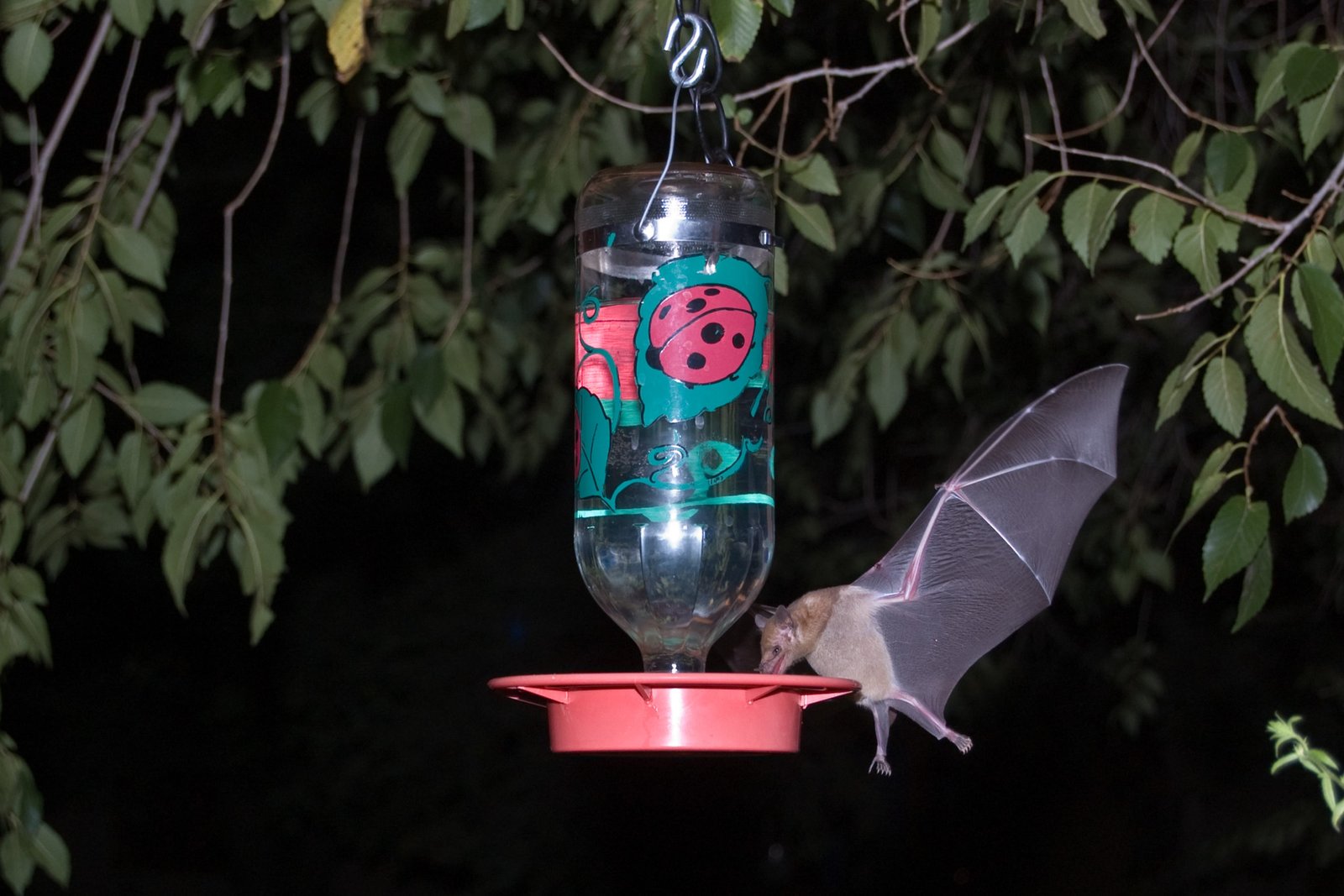Mexican Long-Tongued Bat: Choeronycteris Mexicana

Agaves and other plants are fed on for nectar/pollen by the Mexican long-tongued bats. These bats’ tongues can extend up to a third of their body length, a characteristic that makes them uniquely equipped to reach deep inside an agave or cactus blossom nectar. Long-tongued bats in southern Arizona often get nectar from neighborhood hummingbird feeders as well. This species is found in the United States in the southern parts of California, New Mexico, and Arizona.
Learn More: Fruit Bats
Description Of The Mexican Long-Tongued Bat
A medium-sized bat with gray or brown fur above and lighter fur below is the Mexican long-tongued bat. It has a long, slender nose that is about 0.2 inches high with a small arrowhead shape on the tip.
The bat has large eyes and a tiny tail that extends to the end of the interfemoral membrane (less than halfway). Its tongue is the trait that gives this bat its common name. The tongue is very long and can extend up to one-third of the length of its body. The Mexican long-tongued bat has no permanent lower incisors, but 1 to 4 teeth may remain in adults, and the upper incisors are small and do not fill the space between the canines. 1Go To Source online.sfsu.edu -“The Biogeography of the Bat (Choeronycteris mexicana)”
Mexican Long-Tongued Bat Size
The average Choeronycteris Mexicana bat measures:
- Total Length: 85 mm
- Weight: 10-25 g
- Wingspan: 330-380 mm
- Forearm Length: 42- 48 mm
- Tail Length: 10 mm
- Ear length: 16 mm
- Foot Length: 14mm
Habitat Of Mexican Long-Tongued Bats
Mexican long-tongued bats are found in caves, old mine tunnels, and rock fissures in Arizona. This species has also been seen roosting in buildings near pine-oak woodlands. Vegetation includes ocotillo, yucca, agave, manzanita, evergreen oak, and juniper in the roost site’s vicinity.
In well-light portions of the roost site, the bat tends to roost. The bat is most commonly found at elevations between 4,000 and 6,000 feet. 2Go To Source pima.gov -“Mexican Long-Tongued Bat Choeronycteris mexicana”
Mexican Long-Tongued Bat Species Range

In the extreme south of Texas, New Mexico, and Arizona, this species reaches the United States. This species was only known in Texas before 2000 from photographs of a single individual from Hidalgo County, Texas.
Subsequently, in the counties of Nueces, Hidalgo, Cameron, and far West Texas in El Paso County, other scattered individuals were recorded in South Texas. Specimen records submitted to the Department of State Health Services of Texas documented its occurrence in 2010 in Midland and Hays counties (TX). The Mexican long-tongued bat is southern species that is gradually moving northward from along the Rio Grande corridor. 3Go To Source depts.ttu.edu -“MEXICAN LONG-TONGUED BAT Choeronycteris mexicana Tschudi 1844”
Diet Of Mexican Long-Tongued Bats
For Mexican long-tonged bats, the main portion of the diet is nectar along with the protein and lipid-rich pollen that they lick and groom off their fur. They will also gorge themselves on cacti’s fresh fruits during the summer when cactus fruits are ripe. They may also forage for insects to supplement their diets, such as flies and moths. 4Go To Source fs.fed.us -“Mexican Long-Tongued Bat—Nectar-Feeding Bats?”
Mexican Long-Tongued Bat Behavior
This bat’s peak activity occurs 1 1/2 hours after sunset and then up to about 3 hours after sunset, at low sunlight levels. While roosting, bats hang from one foot and can rotate 360 degrees.
It is possible to find the bats alone or in groups of several dozen. They hang in a cluster at temperatures below 70 degrees F and hang one to two inches apart. During the winter, Choeronycteris mexicana migrates south to find flowering food plants like agave and yucca.
Mexican Long-Tongued Bat Mating and Reproduction
Breeding occurs in the northernmost part of the range during the summer months. Between late June and early July, each female bears a single furred youngster. Young bats are seen as early as mid-April in southern Mexico.
As nursery sites, caves, mines, rock crevices, and abandoned buildings are used. The young, 2-3 weeks after birth, stay with their mother until they can fly. It is known that females carry their young in flight.
Choeronycteris mexicana will move their roosting sites to areas of greater food availability once the young can fly. Young Mexican bats are born in the southern United States to leave their maternity roosts for Central America or northern parts of South America in October and November. 5Go To Source animaldiversity.org -“Choeronycteris mexicana Mexican long-tongued bat”
Threats To The Mexican Long-Tongued Bat Species
Mine closures, Recreational caving, renewed mining, mine reclaiming, and food loss are potential threats to this species.
They are very sensitive to intrusion, and when disturbed, they tend to fly out of the roost. For this species, the long-term sustainability of food sources is extremely significant. Modification of these resources may result in the direct loss of food plants by development, prescribed fire, or grazing.
Sources:
- Bravo, Elisa. “The Biogeography of Mexican Long-Tongued Bat.” San Francisco State University, SFSU, 2013, online.sfsu.edu/bholzman/courses/Fall%2003%20project/MexicanLong-tonguedBat.htm.
- Schmidly, David, and Robert Bradley. “A Species Account of the Mexican Long-Tongued Bat | Mammals of Texas | Natural Science Research Laboratory | TTU.” Texas Tech University, Texas Tech University Natural Science Research Laboratory, www.depts.ttu.edu/nsrl/mammals-of-texas-online-edition/Accounts_Chiroptera/Choeronycteris_mexicana.php. Accessed 14 Jan. 2021.
- “Mexican Long-Tongued Bat.” Pima County, Pima County Arizona, www.pima.gov/CMO/SDCP/species/fsheets/vuln/mltb.html. Accessed 14 Jan. 2021.
- Buchmann, Stephen. “Mexican Long-Tongued Bat.” USDA, U.S. Forest Service, www.fs.fed.us/wildflowers/pollinators/pollinator-of-the-month/mexican-long-tongued-bat.shtml. Accessed 14 Jan. 2021.
- Charron, S. 2002. “Choeronycteris mexicana” (On-line), Animal Diversity Web. Accessed January 14, 2021 at https://animaldiversity.org/accounts/Choeronycteris_mexicana/
